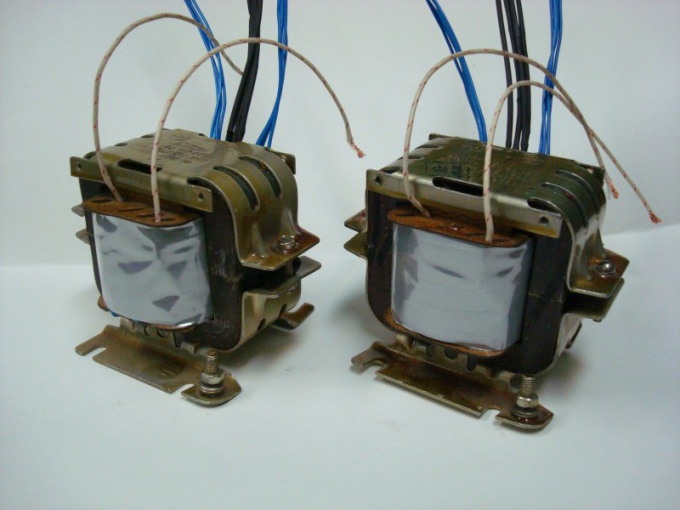You will need
- - avometr (multimeter);
- - power source;
- - thin wire;
- - a knife, a sewing needle;
- calculator
Instruction
1
Using a multimeter (avometr) determine the location of the conclusions of the windings of the transformer and measure their resistance. The primary winding consider one that has the greatest resistance. This is the easiest way to determine the primary winding.
2
If the tested transformer over two winding as the primary, first take any coil with a low resistance. Apply a low AC voltage (e.g. 10 volts) using any power source. Spend the measurements of voltage on all windings. The results of the measurements determine the real primary winding of the transformer. Test yourself by repeating the measurements when applying more voltage to the coils.
3
Then, observing air gap between coil and the yoke over the windings wrap the thin wire, thus creating another winding. The more turns of wire is wound, the higher the accuracy of the final results. If the transformer is no space for another coil, use part of the existing outer winding. To do this, carefully remove the outer insulation layer of the coil to obtain free access to the latest available winding layer.
4
Find the end of the opened coil and count from it any number of turns. Remember that this is the number of turns directly affect the results of the calculations. The last turn carefully remove part of the enamel. Preparing the multimeter, one output tap of the naked coil winding, using a sewing needle. Applied voltage to the primary winding, measure the voltage at your coil or coils counted.
5
Calculate the number of turns in each winding. To do this, the voltage at the investigated winding multiply by the number of turns made by yourself or counted on the last layer. The result divide by the voltages applied to the studied coil.
6
After counting the number of turns in all of the regular transformer windings, calculate the cross-sectional area of the magnetic circuit. For this purpose, the voltage across the primary winding and multiply by 50 and divide by the number of turns of the coil. The result will be an area of core magnetic circuit, expressed in square centimeters.
7
To calculate the power of transformer, the resulting cross-sectional area of the magnetic core construct in the square and divide by 1.3. The result will show the capacity of the device in watts.

